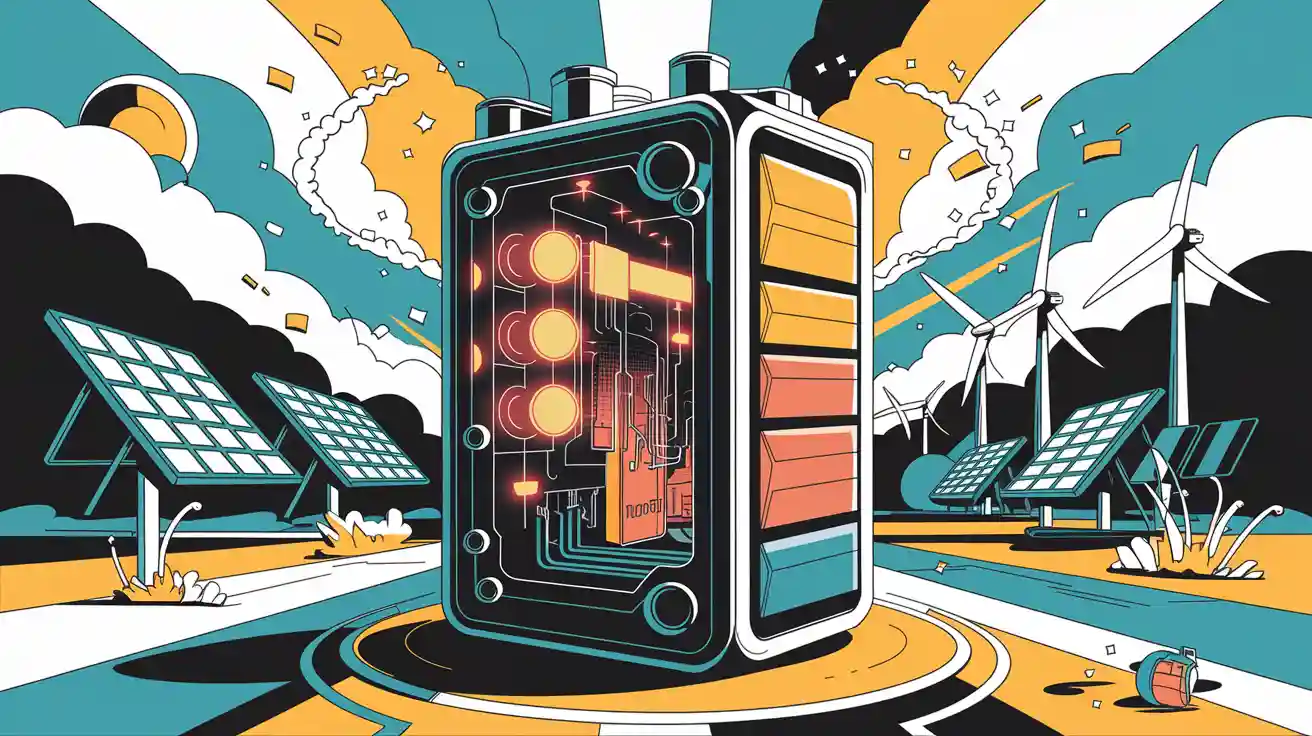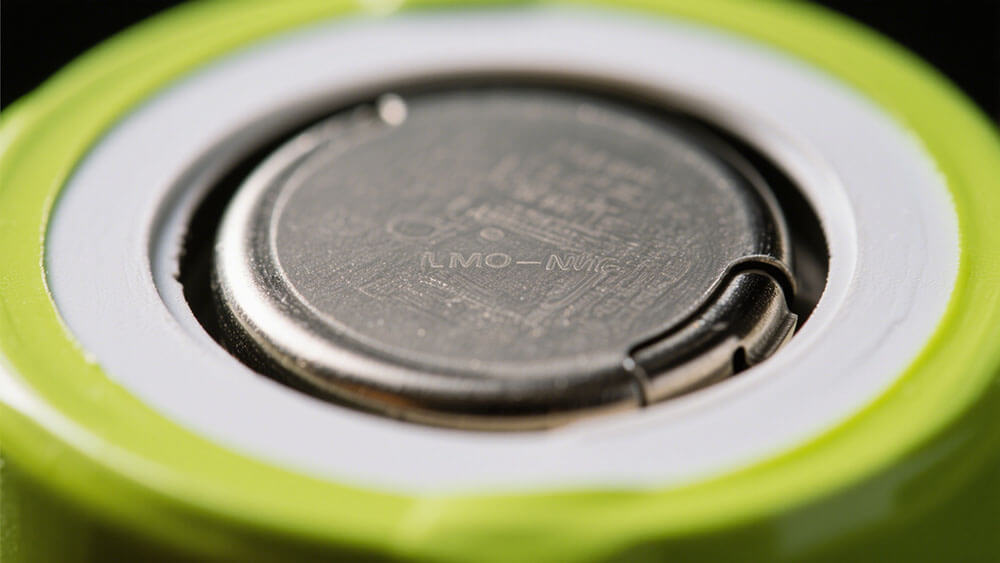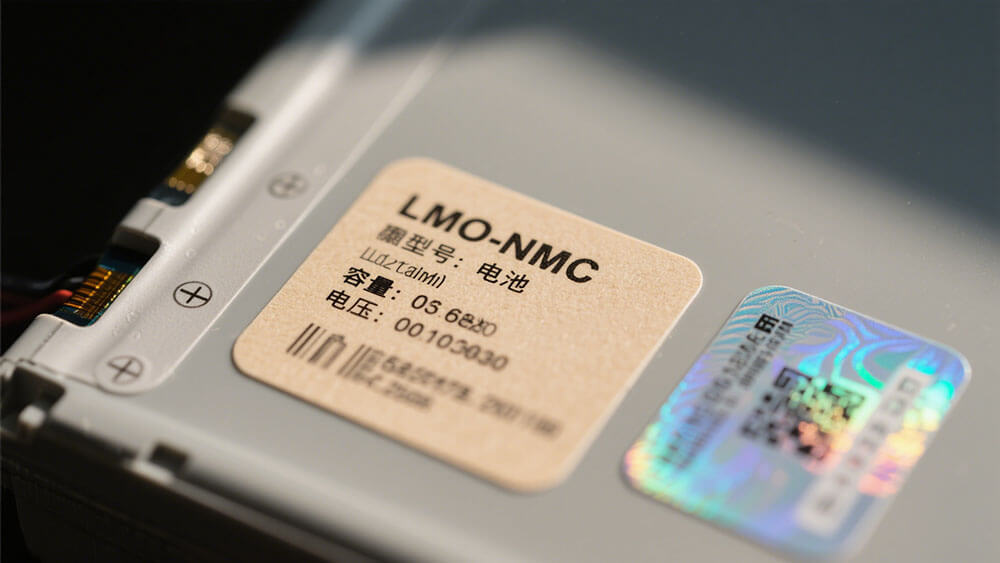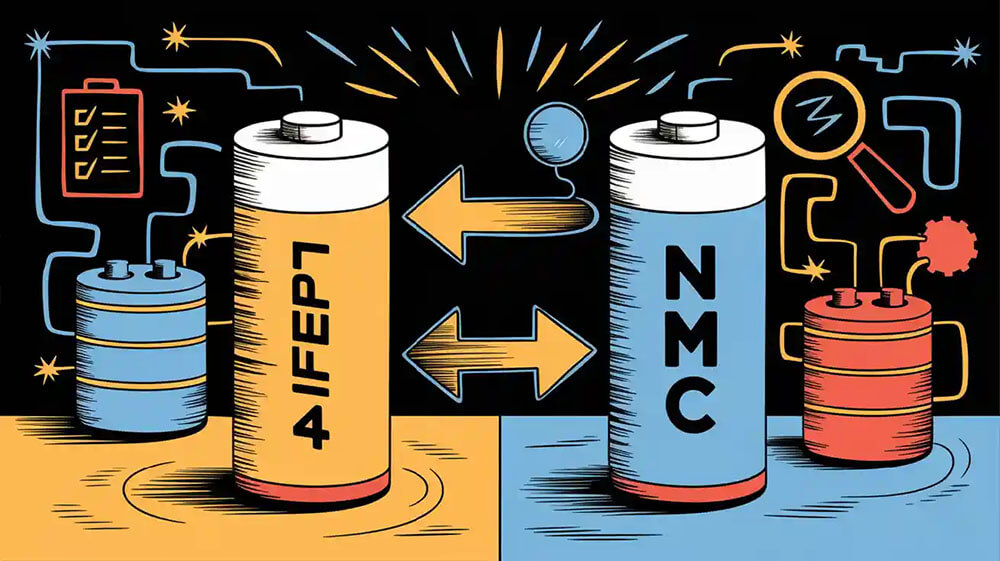Contents

LMO-NMC batteries combine the high power capabilities of LMO Lithium batteries with the energy density and stability of NMC Lithium batteries. You’ll find these hybrid batteries revolutionizing industries that demand both efficiency and performance.
The energy storage market, valued at $10.2 billion in 2023, is projected to reach $30.6 billion by 2032.
Electric vehicles drive demand for lithium-ion batteries, with NMC leading due to its optimized performance and cost reduction.
These batteries redefine how you power electric tools, renewable energy systems, and next-gen vehicles.
Key Takeaways
LMO-NMC batteries give strong power and save energy. They are great for electric cars and green energy systems.
These batteries are very safe. LMO keeps them stable in heat, and NMC makes them strong, lowering the chance of overheating problems.
The mix of LMO and NMC lets these batteries charge fast and last long. This makes them a smart and affordable option for many uses.
Part 1: Understanding the Components of LMO-NMC Batteries

1.1 LMO (Lithium Manganese Oxide): High Power and Safety
LMO Lithium batteries stand out for their unique spinel structure, which facilitates three-dimensional lithium-ion diffusion. This design enables rapid charge and discharge cycles, making LMO ideal for high-power applications like hybrid electric vehicles and industrial tools. With a platform voltage of 3.7V and an energy density ranging from 120 to 170Wh/kg, LMO delivers reliable performance in demanding scenarios.
Safety is another hallmark of LMO. Its thermal stability surpasses many other lithium-ion chemistries, reducing the risk of thermal runaway. For instance, LMO can withstand temperatures exceeding 200°C, making it a safer choice for applications requiring robust performance under extreme conditions.
Tip: If you’re looking for batteries with excellent low-temperature performance, LMO Lithium batteries retain up to 80% of their discharge capacity even at -30°C.
1.2 NMC (Nickel Manganese Cobalt Oxide): Energy Density and Longevity
NMC Lithium batteries are renowned for their energy-dense composition and extended cycle life. By combining nickel, manganese, and cobalt, NMC achieves a platform voltage of 3.6–3.7V and an energy density of 160–270Wh/kg. This chemistry is particularly suited for applications requiring high energy storage, such as electric vehicles and consumer electronics.
Nickel enhances capacity, manganese improves safety, and cobalt stabilizes the structure. Together, these elements create a battery capable of delivering a continuous discharge current of up to 20A under optimized conditions. NMC’s cycle life ranges from 1,000 to 2,000 cycles, ensuring durability for long-term use.
Note: NMC Lithium batteries are a preferred choice for electric vehicles due to their ability to balance energy density and stability.
1.3 Key Differences Between LMO and Lithium-Ion NMC Chemistries
Understanding the distinctions between LMO and lithium-ion NMC chemistries helps you choose the right battery for your application. Here’s a comparative analysis:
Parameter | LMO | NMC |
|---|---|---|
Charge (C-rate) | 1C typical; 5C max | 0.7–1C |
Discharge (C-rate) | 10C possible | 1C, 2C possible |
Cycle life | 300–700 cycles | 1,000–2,000 cycles |
Thermal runaway | 200°C + | 210°C |
Cost (per kWh) | ~$1,005 | ~$420 |
Application | Electric vehicles, UPS | E-bikes, industrial |
LMO excels in high-power scenarios due to its rapid charge and discharge capabilities. NMC, on the other hand, offers superior energy density and longevity, making it ideal for energy-dense applications.
Call to Action: Explore custom battery solutions tailored to your needs: Custom Battery Solutions.
Part 2: How LMO-NMC Batteries Achieve Power and Efficiency

2.1 The Role of LMO in High Power Output and Fast Charging
LMO Lithium batteries play a critical role in delivering high power output and enabling fast charging capabilities. Their unique spinel structure allows lithium ions to move through three-dimensional diffusion pathways, significantly enhancing ion transport efficiency. This structural advantage supports rapid charge and discharge cycles, making LMO an ideal choice for applications requiring bursts of power, such as hybrid electric vehicles and industrial tools.
The high battery voltage of LMO, typically around 3.7V, ensures consistent performance during demanding operations. For instance, in scenarios where quick energy replenishment is essential, such as in power tools or emergency backup systems, LMO’s fast charging capability minimizes downtime. Additionally, its ability to maintain up to 80% of its discharge capacity at temperatures as low as -30°C highlights its reliability in extreme environments.
Tip: If your application demands high power and rapid charging, LMO Lithium batteries provide a dependable solution with excellent thermal stability.
2.2 The Role of NMC in Energy Storage and Stability
NMC Lithium batteries excel in energy storage and long-term stability, making them a cornerstone of modern lithium-ion battery technology. By combining nickel, manganese, and cobalt, NMC achieves a balance between energy density, safety, and structural integrity. This chemistry offers an energy density range of 160–270Wh/kg, enabling extended real-world range for electric vehicles and other energy-intensive applications.
Nickel contributes to higher capacity, while manganese enhances thermal stability, and cobalt ensures structural durability. These attributes make NMC a preferred choice for applications like consumer electronics and renewable energy storage systems. The platform voltage of NMC, ranging from 3.6V to 3.7V, ensures consistent energy delivery over extended periods.
In addition to its energy density, NMC’s cycle life of 1,000–2,000 cycles ensures durability, reducing the need for frequent replacements. This longevity makes it a cost-effective option for businesses seeking reliable energy solutions.
Callout: NMC Lithium batteries are particularly effective in applications where energy density and stability are critical, such as electric vehicles and industrial systems.
2.3 Synergy Between LMO and NMC for Optimal Performance
The combination of LMO and NMC in hybrid LMO-NMC batteries creates a synergy that optimizes battery performance. LMO contributes high power output and fast charging capabilities, while NMC enhances energy density and stability. Together, these chemistries address the limitations of single-material batteries, offering a balanced solution for diverse applications.
For example, in electric vehicles, LMO-NMC batteries provide both the high power needed for acceleration and the energy storage required for extended real-world range. This hybrid approach also improves safety by leveraging LMO’s thermal stability and NMC’s structural integrity. Additionally, the reduced reliance on cobalt in the NMC component lowers costs, making LMO-NMC batteries a more economical choice for large-scale deployments.
Note: The synergy between LMO and NMC ensures that LMO-NMC batteries deliver consistent performance across a wide range of applications, from industrial tools to renewable energy systems.
If you’re looking for a custom battery solution tailored to your specific needs, explore our offerings here: Custom Battery Solutions.
Part 3: Advantages and Challenges of LMO-NMC Batteries

3.1 Advantages: Cost-Effectiveness, Safety, and Versatility
LMO-NMC batteries offer a unique combination of benefits that make them a preferred choice in modern battery technology. Their cost-effectiveness stems from the use of manganese, a widely available and affordable material. By reducing the reliance on cobalt, these batteries achieve a lower production cost compared to traditional NMC lithium batteries.
Safety is another key advantage. The thermal stability of LMO enhances the overall safety profile of LMO-NMC batteries, reducing the risk of thermal runaway. This makes them suitable for applications requiring robust performance under extreme conditions, such as industrial tools and electric vehicles.
Versatility further sets these batteries apart. Their ability to balance high power output and energy density makes them ideal for a wide range of applications, including renewable energy storage, consumer electronics, and medical devices.
Tip: If you need a battery solution tailored to your specific application, explore our custom battery solutions.
3.2 Challenges: High-Temperature Stability and Recycling Complexity
While LMO-NMC batteries excel in many areas, they face challenges in high-temperature stability and recycling. At elevated temperatures, the manganese component in LMO can degrade, potentially impacting battery life cycles. Advanced thermal management systems and material modifications are essential to address this issue.
Recycling complexity also presents a challenge. The combination of LMO and NMC materials requires specialized recycling processes, which can increase costs. However, ongoing advancements in recycling technologies aim to improve the economic feasibility of recovering valuable materials from these lithium batteries.
3.3 Comparison with Other Lithium-Ion Chemistries (e.g., LFP, NMC)
Understanding how LMO-NMC batteries compare to other lithium-ion chemistries helps you make informed decisions. Here’s a quick comparison:
Parameter | LMO-NMC Batteries | NMC Lithium Battery | LiFePO4 Lithium Battery |
|---|---|---|---|
Energy Density | Medium (160–200Wh/kg) | High (160–270Wh/kg) | Low (100–180Wh/kg) |
Power Output | High | Medium | Low |
Safety | High | Medium | Very High |
Cost | Low | Medium | Lowest |
Cycle Life | ~1,000 cycles | 1,000–2,000 cycles | 2,000–5,000 cycles |
LMO-NMC batteries strike a balance between energy density and power output, making them versatile for various applications. While NMC batteries excel in energy storage, LiFePO4 batteries offer unmatched cycle life and safety.
Callout: For more insights into sustainable battery solutions, visit Sustainability at Large Power.
LMO-NMC batteries redefine energy solutions by combining high power output with exceptional efficiency. Their unique chemistry makes them indispensable in electric car batteries, renewable energy storage, and industrial tools. Future advancements in materials and system integration promise even greater performance and sustainability.
Explore Custom Solutions: Tailor your battery needs with Large Power’s custom battery solutions.
FAQ
1. What industries benefit most from LMO-NMC batteries?
LMO-NMC batteries are ideal for electric vehicles, renewable energy storage, industrial tools, and consumer electronics. Their balance of power and efficiency suits diverse applications.
Explore More: Learn about custom battery solutions for your industry needs.
2. How do LMO-NMC batteries compare to LiFePO4 batteries?
Feature | LMO-NMC Batteries | LiFePO4 Batteries |
|---|---|---|
Energy Density | 160–200Wh/kg | 100–180Wh/kg |
Cycle Life | ~1,000 cycles | 2,000–5,000 cycles |
Power Output | High | Medium |
Cost | Low | Lowest |
Note: LMO-NMC batteries offer higher energy density, while LiFePO4 excels in cycle life and cost-effectiveness. For custom battery designs, visit Large Power.
3. Can LMO-NMC batteries support robotics applications?
Yes, LMO-NMC batteries provide the high power and energy density required for robotics. Their fast charging and thermal stability ensure reliable performance in demanding robotic systems.
Discover More: Explore robotics battery solutions tailored to your needs.





